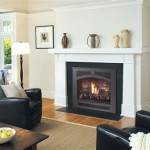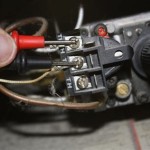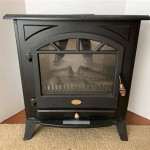Blower Fan Considerations for Heatilator Gas Fireplaces
Heatilator gas fireplaces are a popular choice for homeowners seeking supplemental heating and aesthetic appeal. One component that significantly enhances the efficiency and comfort provided by these fireplaces is the blower fan. This article explores the role of blower fans in Heatilator gas fireplaces, discussing their function, benefits, types, selection considerations, potential issues, and maintenance practices.
A blower fan, also known as a circulating fan, is an electric device designed to improve the heat distribution of a gas fireplace. Without a blower, heat primarily radiates directly from the fireplace unit. This concentrated heat can result in uneven heating within a room, with areas close to the fireplace becoming excessively warm while other sections remain relatively cool. A blower fan addresses this issue by forcing heated air out into the room, promoting better air circulation and a more uniform temperature distribution.
The blower fan typically operates by drawing cooler air from near the floor or the sides of the fireplace, passing it over the heated firebox or heat exchanger, and then expelling the warmed air into the room through vents. This process effectively increases the convective heat transfer, resulting in a more efficient and comfortable heating experience.
Benefits of Using a Blower Fan in a Heatilator Gas Fireplace
The primary advantage of incorporating a blower fan into a Heatilator gas fireplace system lies in its enhanced heating efficiency. By actively circulating heated air, the blower fan maximizes the utilization of the heat produced by the fireplace. This improved efficiency translates to lower energy costs, as the fireplace can heat the desired space more quickly and effectively, reducing the overall runtime required to maintain a comfortable temperature.
Beyond energy efficiency, a blower fan also contributes to greater comfort. As mentioned, the active circulation of heated air mitigates temperature imbalances within the room. This results in a more consistent and comfortable environment, eliminating cold spots and preventing overheating near the fireplace itself. This is particularly beneficial in larger rooms or open-concept living spaces where uneven heating can be a significant issue.
Another often-overlooked benefit is the potential for faster heating. While a radiant fireplace primarily heats objects and surfaces directly in front of it, a blower fan accelerates the warming process of the entire room. The forced air circulation allows the heated air to reach all corners of the space more rapidly, providing quicker relief from cold temperatures.
Types of Blower Fans for Heatilator Gas Fireplaces
Several types of blower fans are available for Heatilator gas fireplaces, each with its own characteristics and suitability for different models and applications. Understanding these distinctions is crucial for selecting the appropriate blower for a specific fireplace unit.
Axial fans are a common type, characterized by their impeller blades that rotate around an axis, drawing air in and then expelling it in the same direction. These fans are often compact and relatively inexpensive, making them a popular choice for many Heatilator gas fireplace models. They are generally suitable for applications where the airflow is relatively unrestricted.
Centrifugal fans, also known as squirrel cage blowers, utilize a rotating impeller with curved blades to draw air in and then discharge it at a right angle. Centrifugal fans are capable of generating higher air pressure and are often preferred for applications where the airflow is more restricted or where a longer duct run is required. They tend to be quieter than axial fans but can be slightly more expensive.
Tangential fans, also referred to as cross-flow fans, employ a long, cylindrical impeller with blades spanning its length. These fans produce a uniform airflow across their entire width, making them suitable for applications where a wide and even distribution of air is desired. While less common than axial or centrifugal fans in gas fireplaces, they can be found in some models.
The selection of the appropriate blower fan type depends on the specific design and requirements of the Heatilator gas fireplace. Factors such as the size and shape of the firebox, the location and size of the air intake and outlet vents, and the desired airflow rate all play a role in determining the optimal fan type.
Selection Considerations for a Heatilator Gas Fireplace Blower Fan
Choosing the right blower fan for a Heatilator gas fireplace involves several key considerations. These factors ensure optimal performance, longevity, and compatibility with the fireplace unit.
Compatibility is paramount. The blower fan must be specifically designed or approved for use with the particular Heatilator gas fireplace model. Using an incompatible blower can lead to performance issues, damage to the fireplace, or even safety hazards. Always consult the fireplace manufacturer's specifications or a qualified technician to ensure compatibility.
Airflow rate, measured in cubic feet per minute (CFM), is another critical factor. The CFM rating indicates the volume of air the blower fan can move per minute. A blower with an insufficient CFM rating will not effectively circulate heated air, negating the benefits of using a blower. Conversely, an excessively high CFM rating can result in a noisy operation and potentially overcool the firebox, reducing the fireplace's efficiency. Determine the appropriate CFM range based on the size of the room, the fireplace's heating capacity, and the manufacturer's recommendations.
Noise level is an important consideration, particularly for bedrooms or living rooms where quiet operation is desired. Blower fans generate noise due to the movement of air and the operation of the motor. Look for blowers with noise ratings, typically expressed in decibels (dB). Lower dB ratings indicate quieter operation. Features such as vibration dampening mounts and noise-reducing fan blade designs can also contribute to quieter performance.
Energy efficiency should also be considered. Blower fans consume electricity, so selecting a model with a high energy efficiency rating can help minimize operating costs. Look for features such as variable speed controls, which allow you to adjust the fan speed and energy consumption based on the heating needs of the room. DC powered fans are also generally more energy efficient than AC powered fans.
Durability and build quality are important for ensuring the longevity of the blower fan. Look for blowers made from high-quality materials with robust construction. Check for features such as sealed bearings and thermally protected motors, which can extend the lifespan of the blower.
Potential Issues and Troubleshooting
Like any mechanical device, blower fans for Heatilator gas fireplaces can experience problems over time. Understanding common issues and basic troubleshooting steps can help resolve minor problems and determine when professional assistance is required.
One common issue is a noisy blower fan. This can be caused by several factors, including loose mounting screws, worn bearings, or debris accumulation on the fan blades. Check the mounting screws and tighten them if necessary. Clean the fan blades and housing to remove any dust or debris. If the noise persists, the bearings may be worn and require lubrication or replacement.
Another potential problem is a blower fan that fails to operate. This could be due to a blown fuse, a faulty switch, a damaged wiring connection, or a malfunctioning motor. Check the fuse and replace it if necessary. Inspect the switch and wiring for any signs of damage. If the motor is not functioning, it may need to be replaced.
Reduced airflow can also be an indication of a problem. This could be caused by a clogged air filter, a blocked air vent, or a malfunctioning blower motor. Clean or replace the air filter if it is dirty. Clear any obstructions from the air vents. If the airflow remains low after checking these items, the blower motor may be failing and require replacement.
Overheating can be detrimental to the blower fan and the fireplace. Ensure that the blower fan is properly installed and that the air vents are not blocked. If the blower fan is overheating, it may have reached the end of its lifespan and needs to be replaced. Continuing to operate an overheating blower can create a safety hazard. It is essential to address the issue promptly to prevent further damage.
Maintenance Practices for Heatilator Gas Fireplace Blower Fans
Regular maintenance is essential for ensuring the optimal performance and longevity of a Heatilator gas fireplace blower fan. Simple maintenance tasks can prevent many common problems and extend the life of the blower.
Cleaning the blower fan is a crucial maintenance step. Dust and debris can accumulate on the fan blades and housing, reducing airflow and increasing noise. Periodically clean the blower fan using a vacuum cleaner with a brush attachment. Turn off the fireplace and allow the blower to cool completely before cleaning. Be careful not to damage the fan blades or wiring during the cleaning process.
Inspecting the blower fan and its components is another important maintenance task. Check for any signs of wear or damage, such as loose screws, frayed wires, or cracked fan blades. Tighten any loose screws and replace any damaged components. If you are not comfortable performing these inspections yourself, consider having a qualified technician inspect the blower fan annually.
Lubricating the blower fan motor bearings can help reduce friction and noise. Use a high-quality lubricant specifically designed for electric motors. Apply a small amount of lubricant to the bearings according to the manufacturer's instructions. Avoid over-lubricating the bearings, as this can attract dust and debris.
Replacing air filters regularly is essential for maintaining optimal airflow and preventing dust from entering the blower fan. Follow the manufacturer's recommendations for air filter replacement. Using high-quality air filters can further improve the performance and longevity of the blower fan.
By following these maintenance practices, homeowners can ensure that their Heatilator gas fireplace blower fans operate efficiently and reliably for many years.

Gfk4 Gfk4a Fireplace Blower Fan Kit For Heatilator Fireplaces

Installing A Fireplace Blower Gfk4 Gfk4a In Heatilator Natural Gas

Heatilator Fireplace Blower Fan Kit Gfk4b Hearth Trends

Gfk 160a Fireplace Blower Fan Kit For Gti Heatilator Heat Glo And Quadra Fir 658354166608

Blower Kit For Heatilator Fireplaces Gfk4

Heatilator Gfk21 Fireplace Blower Fan Hearth Trends

Blower For Heatilator Gas Fireplaces Gfk 160 Only

Gfk21 Fk21 Replacement Fireplace Blower Fan Kit For Heatilator Majestic Vermont

Gfk4 Fk4 Fireplace Blower Fan Kit For Heatilator Majestic Vermont C Grillpartsreplacement Bbq Parts Retailer

Replacing Noisy Heatilator Fans In Fireplace
Related Posts








